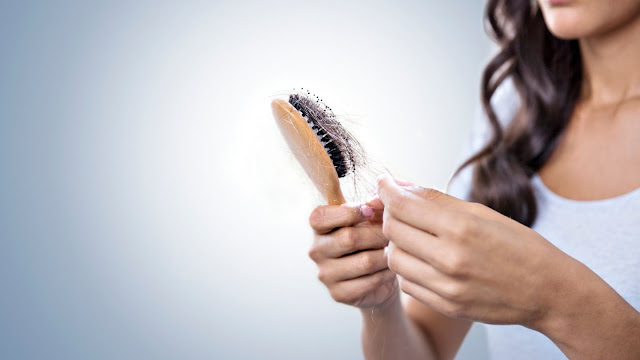Tellogen
Effluvium is a form of temporary hair loss which happened due to stress, shock
or a trauma. It generally occurs on the top of the scalp. This form of hair
loss is different from androgenic alopecia though the hair loss happens in the
same region. In this article you will get a detailed idea about telogen
effluvium from the best hair transplant clinic in
Kolkata.
How is Telogen Effluvium defined?
If an
individual experiences period of hair shedding for 6 months or more it might be
the case of chronic telogen effluvium. In this condition the person lose their
but it is reversible. Also their hair starts to become noticeably thin. It
happens more in women which get triggered by the disturbance in hair cycle.
The hair cycle has three phases:
Anagen Phase
Catagen
Phase
Telogen
Phase
Telogen
effluvium is associated with the telogen phase. Normally, 5-10% of a
person’s hair is in the telogen phase at any one time.
With telogen
effluvium, the anagen phase slows down, meaning that fewer hairs enter the next
two stages. With this condition, around 30% of hair follicles move into the telogen phase, which means that hair
shedding occurs.
SYMPTOMS & CAUSE:
The biggest symptom of telogen
effluvium is shedding of hair suddenly. You may notice that there are more than
usual hair strands in the pillow or drain.
Now disturbance in hair cycle can be
caused by a various factors:
Severe stress. Prolonged periods
of stress can result in telogen
effluvium. Hair loss typically occurs about 3months after the
stressful event.
Poor diet. Hair requires key
nutrients including protein, iron, B-vitamins, and zinc to grow. A shortage of
these nutrients may affect the quality and quantity of a person’s hair.
Sudden weight loss. Weight loss or
chronic calorie restriction, such as in anorexia nervosa, can cause the
hair to shed.
Pregnancy and childbirth. During
pregnancy, more hair is in the growth phase for longer. Hormonal changes that
occur 3 to 6 months after birth can cause hair to shed. This is
called post-partum telogen effluvium.
Menopause. Hormonal changes that
occur during the menopause may also cause telogen effluvium.
Certain drugs. Certain medications
and recreational drugs can cause hair loss.
Underlying health conditions. These
can include autoimmune disease, conditions that affect the thyroid gland, and
alopecia areata.
Surgery. Depending on the type of
procedure, length of stay in hospital, medications, and overall nutritional
status.
Metal toxicity. Contact with
toxic chemicals in metal can lead to hair loss.
Treatment:
Since hair loss due to telogen
effluvium is temporary, as soon as the treatment for the cause of hair loss
gets started (be it stress or trauma) the hair loss eventually stops and the
hair cycle comes to its normal phase and hair regrowth starts.
Treatment options include:
addressing nutritional deficiencies
through diet
non-surgical hair replacement
hormone replacement therapy for
people experiencing menopause
counselling support to manage stress
or anxiety
An individual suffering from hair
loss should try to avoid all sorts of chemical and heat treatment like the
usage of blow dryer, straightener, curler or any form of hair styling products.
Dietary consideration includes:
Protein based food as the hair
components are mainly made up of protein. Hence in-taking protein in the diet
will help in regrowth of hair
Iron deficiency may lead to telogen
effluvium. Iron-rich food will help the hair to grow faster.
Supplementation can be considered for
a temporary period of time.
Conclusion:
From the
above it is quite evident that telogen effluvium is a temporary form of hair
loss and nothing like androgenic alopecia. Getting diagnosed with a temporary
form of hair loss is much better than its permanent counter parts. If you
notice the symptoms of this form hair loss visit a physician as soon as
possible.


































